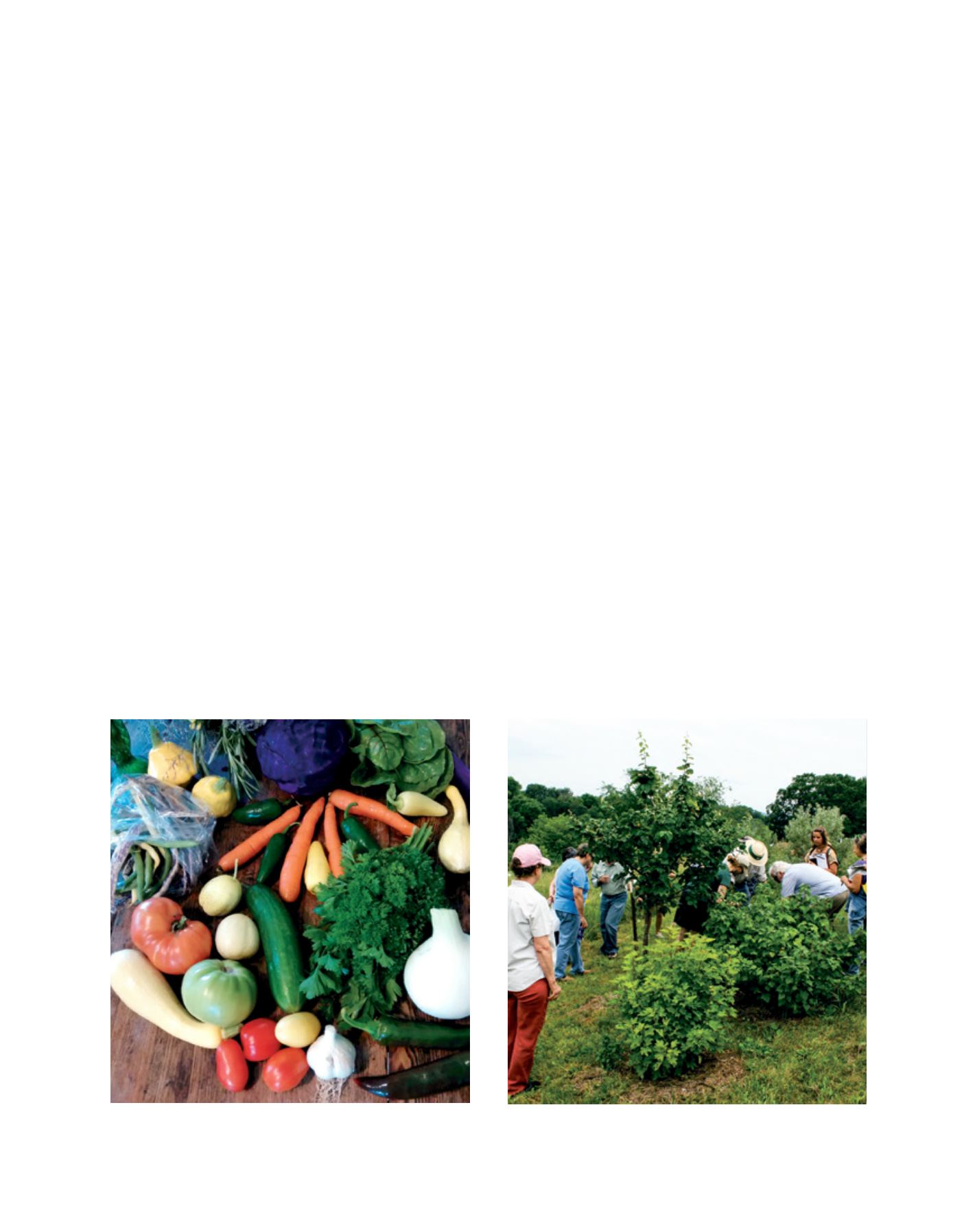

[
] 61
which originated in Europe and Japan in the 1970s – could be
applicable to the developing world but that the model would
necessitate “interest and commitment from both the produc-
ers and the consumers.”
The CSA model fits very well in the United States with
consumers who are increasingly seeking a more direct connec-
tion to either their food, their farmer, or both. With the vast
majority of Americans now having very little involvement in
agriculture at all, this trend could start reconnecting the popu-
lation to its agricultural roots.
It might also be applicable for those in developing nations
who have a small plot of land and are willing to seek support
from their urban neighbours. “We’re a small CSA, feeding 12
households on roughly one-eighth of an acre or about the
size of a city lot,” said Schneider. “This could be something
that might work in the developing world since for many, risk
management tools just aren’t there. People can read this, inno-
vate and make the model work for them or their country.”
Schneider noted that in countries where input costs, espe-
cially fossil fuels and fertilizers, are daunting, small-scale
CSAs have found a way to better manage their environmental
footprint. “We’ve reduced our on-farm gasoline use to about
a gallon per year, so that means we’re able to produce 8-11
calories of food for each calorie of energy we use, roughly 90
times the efficiency of conventional agriculture,” she added.
Hilltop runs entirely on renewable energy. “Our goal is to
be as bountiful as possible with as little drain on resources
as possible,” said Schneider. “We’ve installed solar panels
to erase our energy footprint from the grid. We’ve installed
2,500 gallons of water storage so we can irrigate with rain-
water rather than pumping from our well. Our orchard was
designed to produce fruit almost without input, using species
that would grow symbiotically together and not be attacked
by pests. In our CSA fields, we compost, mulch, rotate crops
and plant crops that either attract or repel insects.”
Overall, CSAs are very labour intensive, and the success
of Hilltop has been through the farmers’ ability to grow a
large variety of crops on a small area. “We feed 12 families,
although some CSAs feed 1,000 families, so there is a lot of
room for flexibility,” said Schneider.
Schneider believes that CSAs hold a bright hope for the
future because they turn the current, industrialized-world
model of modern agriculture on its head. “The dominant para-
digm is that agriculture is an inefficient use of energy and
land, but we’re changing,” she said. “Agriculture is maybe one
of the last real democratic systems that we have.”
In addition to growing vegetables, Hilltop has another 25
acres in prairie, 11 acres of woodland and one acre in niche
fruit production. In 2009, the couple started a sustainable
fruit programme. “We grow fruits like elderberry, currants
and honeyberry in a forest-like setting,” said Scheider.
The approach, widely known as agroforesty, is also a
model that is applicable to developing regions because it uses
perennial, multipurpose plants that share resources and are
mutually supportive. “I’ve had the opportunity to support
farmer-to-farmer programmes around the world and every
time I’d visit farms, I noticed that fruit and nut trees would
be interplanted with the vegetables or along hedgerows and
living fences,” noted Scheider. “I was inspired to try a few of
these techniques gleaned from other farms, to tweak, research
and adapt them to our farm’s management system. Again,
through intensive cultivation and careful planning, you can
select plants that help each other, cutting down on your over-
head costs substantially.”
Schneider said that although languages and locations vary,
farmers across the world have one thing in common: their love
Financial support from CSA subscribers early in the season supplies funds for
seeds and other inputs, eliminating the cost of production loans
Currant Events participants at Hilltop Community Farm, sampling
blackcurrants while touring through the young food forests
Image: Rob McClure, Hilltop Community Farm
Image: Ian Aley, Living Earth Community Farm
D
eep
R
oots
















